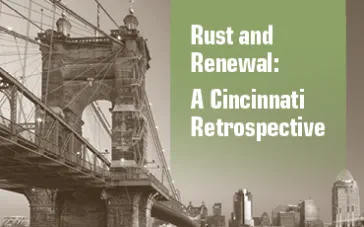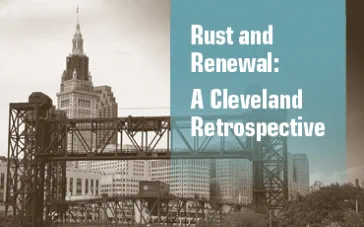Article
Rust and Renewal: A Pittsburgh Retrospective
Pittsburgh’s economy has changed considerably following the significant structural adjustments to the steel industry, and to manufacturing more generally, that occurred roughly 40 years ago. This report evaluates the performance of Pittsburgh’s economy since these events along a number of dimensions, including employment, unemployment, population, and per capita income. It also explores the emergence of new industries in the area and discusses the region’s prospects for future growth. Throughout this report, we compare the economic performance of the Pittsburgh metropolitan statistical area not only to that of the United States as a whole, but also to that of a subset of historically manufacturing-intensive metropolitan areas that collectively this report terms “the industrial heartland.”
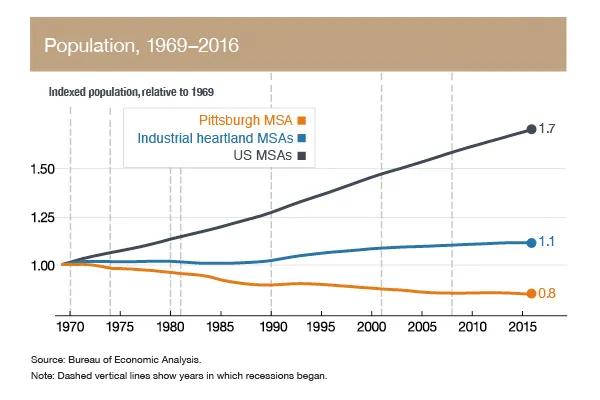
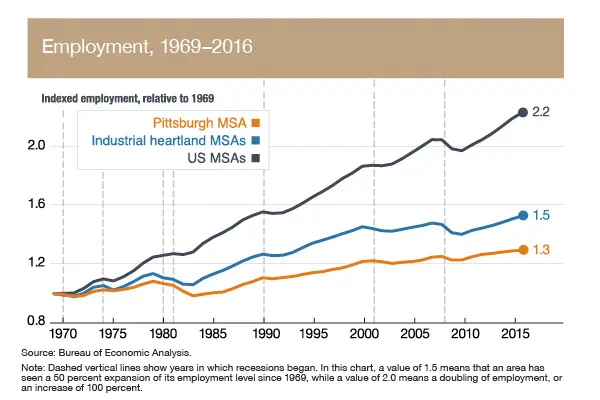
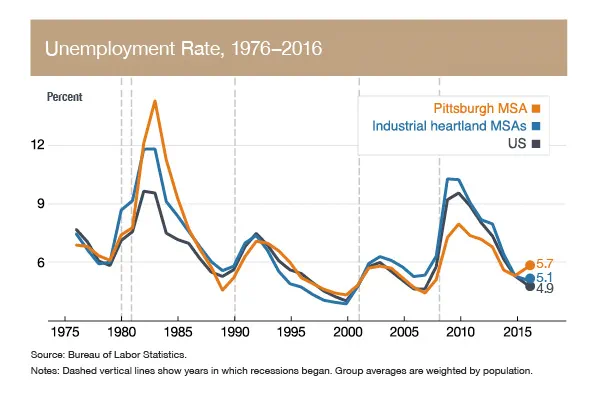
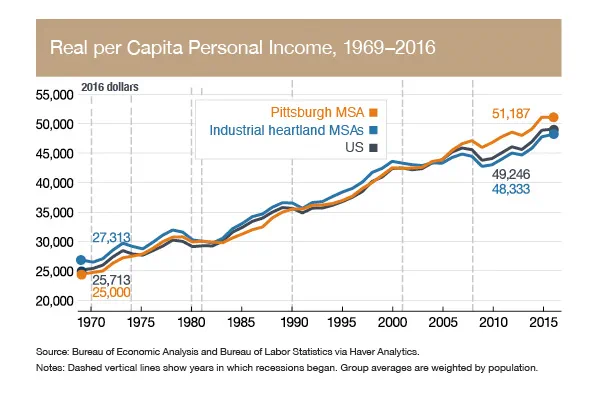
The key results of this analysis are the following:
- Prior to the structural adjustments affecting the steel industry, the Pittsburgh metropolitan statistical area (MSA) had been above average in terms of its share of manufacturing employment and earnings, but by 1990, it was below average along both dimensions.
- While the Pittsburgh MSA suffered greatly during and after the twin recessions of the early 1980s, its experience during and after the Great Recession was altogether different, with far-less-severe job losses in percentage terms than the nation’s and a more rapid return to prerecession employment levels.
- Pittsburgh’s per capita income fell below the nation’s average during the 1980s, but it rebounded by the beginning of the 1990s and was approximately 4 percent higher than the national average by 2016.
- While manufacturing is no longer a source of specialization for the region, industries associated with management, mining and utilities, healthcare, and education have above-average employment in the region compared with that of the nation. The region also appears to be an emerging energy and high-technology hub.
- While the area was losing workers in the early 1980s, more recently it has attracted the young and educated. By 2010, the Pittsburgh MSA was in the top quintile among America’s 100 most-populous metro areas in terms of its share of 25- to 35-year-olds with a bachelor’s or advanced degree.
- Share


